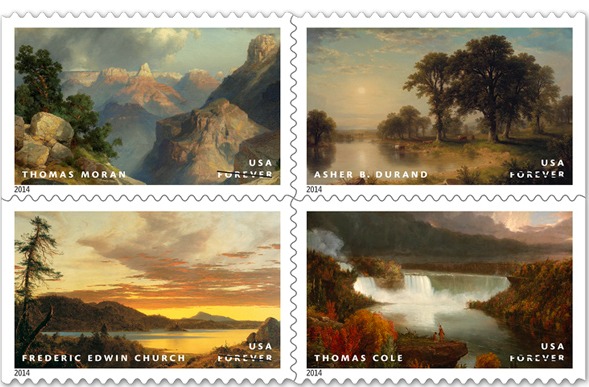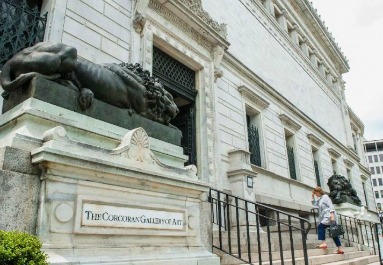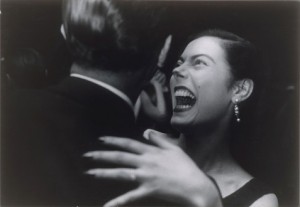With the stroke of Gov. Deval Patrick’s pen a few weeks ago, the Massachusetts Museum of Contemporary Art got the go-ahead to realize the nearly 30-year-old dream of transforming a 19th century, 26-building, 16-acre factory complex into a destination arts center that would also help revive the economy of North Adams, Mass.
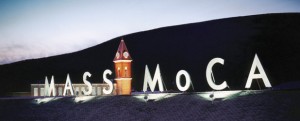 As the art world knows, the road has been a bit bumpy and, along the way, the vision has changed. But Mass MoCA has hit something of a groove of late, giving state officials the confidence to allocate $25.4 million from state coffers for the expansion. Now, under director Joe Thompson (pictured below) — who’s been there for 29 years, from the beginning — it will reclaim almost all of the 600,000 square feet campus. Massachusetts taxpayers’ money will pay for the necessary infrastructure improvements, for fitting out the parts of the factory complex that are not currently in use, to make them ready for more art.
As the art world knows, the road has been a bit bumpy and, along the way, the vision has changed. But Mass MoCA has hit something of a groove of late, giving state officials the confidence to allocate $25.4 million from state coffers for the expansion. Now, under director Joe Thompson (pictured below) — who’s been there for 29 years, from the beginning — it will reclaim almost all of the 600,000 square feet campus. Massachusetts taxpayers’ money will pay for the necessary infrastructure improvements, for fitting out the parts of the factory complex that are not currently in use, to make them ready for more art.
I tell that story, in detail, in this coming Sunday’s New York Times, in the Arts & Leisure section. The expansion raises questions — can he raise the additional money required? Will his plan — which draws on partners to lend art — swamp Mass MoCA’s stated mission of seeking “to catalyze and support the creation of new art,” put elsewhere as being “a laboratory for art-makingâ€? Is Mass MoCA really, as local state representative Gailanne Cariddi said recently, “something of a national poster child for how the arts and creativity can be generators of jobs and economic growth,†or is it unique?
But so much got left out! As usual. So let me make a few additional points about Mass MoCA here.
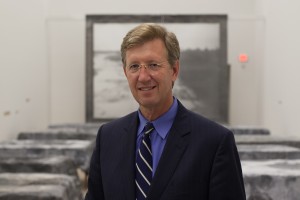 Thompson is one of those museum directors who still keep their hand in curating, along with his two visual arts curators, Susan Cross and Denise Markonish. I think it’s a good idea for directors to do that, when they can. Among Thompson’s efforts were Cai Guo Qiang’s “Inopportune: Stage One,†that smashup of nine cars that later hung in the atrium of the Guggenheim, and Xu Bing’s “Phoenix,â€Â the two gigantic birds made of detritus that are now on view at St. John the Divine Cathedral. I saw the Xu Bing work in North Adams last summer, and I confess it was one of the things — aside from the investment from the state — that got me reinterested in Mass MoCA.
Thompson is one of those museum directors who still keep their hand in curating, along with his two visual arts curators, Susan Cross and Denise Markonish. I think it’s a good idea for directors to do that, when they can. Among Thompson’s efforts were Cai Guo Qiang’s “Inopportune: Stage One,†that smashup of nine cars that later hung in the atrium of the Guggenheim, and Xu Bing’s “Phoenix,â€Â the two gigantic birds made of detritus that are now on view at St. John the Divine Cathedral. I saw the Xu Bing work in North Adams last summer, and I confess it was one of the things — aside from the investment from the state — that got me reinterested in Mass MoCA.- Thompson said that “Lewitt was an eye-opener for me” — referring to the gigantic installation of Sol Lewitt’s works that has been in place there since 2008. That is for two reasons: it gave Mass MoCA something of a permanent collection (technically semi-permanent) and it created the model that Thompson is using to expand. That is, he’ll borrow works on long-term loan from foundations, collectors, artists. We love the art he’s getting, but there’s a bit of a problem — many people come explicitly for these “masters” exhibits, not the new art Mass MoCA wants to midwife. Mass MoCA’s art-laboratory image, therefore, may be swamped by the long-term installations of contemporary masterworks.
- Expect some announcements on those coming partnerships this fall. (BTW, Art in America magazine hailed these partnership as “a template for other ambitious museums with limited resources.â€)
- One measure of a museum’s curatorial success is how many of the shows it originates travel to other museums. Because Mass MoCA’s key asset is space — lots of it — it’s not quite fair to use this as a criterion of success. ““I wish there would be more partner places, but I’d rather not compromise just so a show can travel,†Markonish told me. However, some do travel — and even her “Oh, Canada: Contemporary Art from North North America,†a survey  that included 100 works by 62 artists and was deemed “a revelation†by Boston Globe critic Sebastian Smee, went to Calgary and the Maritime Provinces. But it had to be split into four venues in each place.
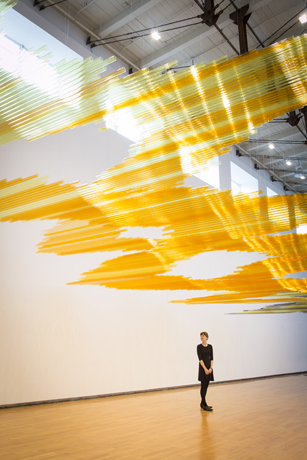 How does Thompson feel about being a model for the kind of “Our Town†projects that Rocco Landesman encouraged when he was NEA chief with grants to foster “arts-based community developmentâ€? “I get calls all the time from people who have a large industrial building in a financially struggling town asking for the recipe,†he told me. But it’s not that simple — the enticing Berkshires have a lot to do with Mass MoCA’s success. “We probably have a higher density of art assets per capita than any other place in the U.S., except maybe Santa Fe,” Thompson said. “Even with these resources, it’s not easy.â€
How does Thompson feel about being a model for the kind of “Our Town†projects that Rocco Landesman encouraged when he was NEA chief with grants to foster “arts-based community developmentâ€? “I get calls all the time from people who have a large industrial building in a financially struggling town asking for the recipe,†he told me. But it’s not that simple — the enticing Berkshires have a lot to do with Mass MoCA’s success. “We probably have a higher density of art assets per capita than any other place in the U.S., except maybe Santa Fe,” Thompson said. “Even with these resources, it’s not easy.â€- At the nearby Clark Art Institute, director Michael Conforti mentioned a reason that the “synergy†the Clark has with Mass MoCA is about to get better: The Clark’s recent move into 20th century art. “In times past, people might go to Mass MoCA but it’s not necessarily the same group coming here to see our Piero de la Francesca and Degas,†he said. “But we are recognizing that the 20th century is art history, and that may result in a closer link with Mass MoCA audiences.â€
- Many artists still want to go to Mass MoCA for residencies and for shows. That’s part of the current Teresita Fernandez exhibit at right. Coming up in a couple years: Nick Cave, who reportedly wants to “reinvent his practice.â€
In some ways, I think it’s fair to say, Mass MoCA is no longer the scrappy upstart it once was. But I think that’s ok. Every institution evolves and ages.


